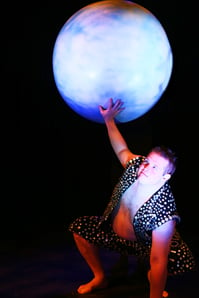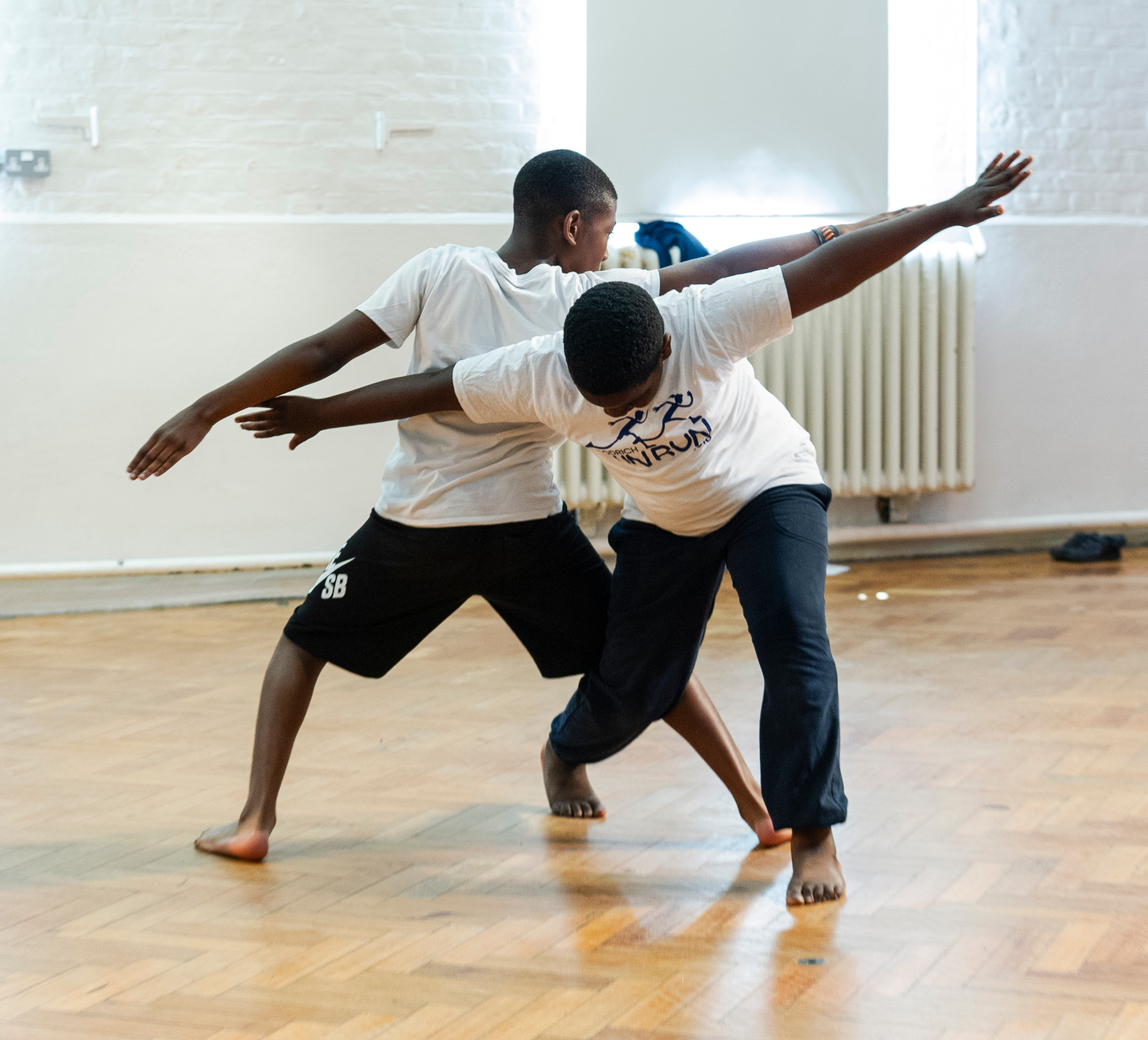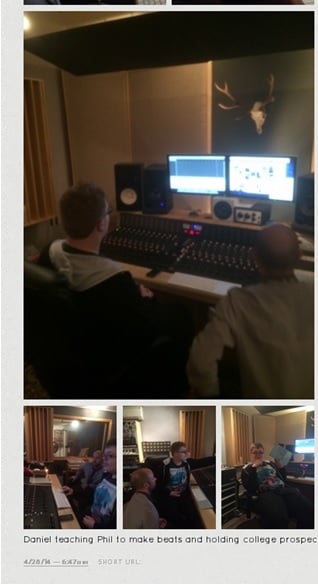
Creative evidencing with young people with individual learning needs
BY: Guest Writer
04 Nov 2014
In this blog we hear from Jo Glover, Co Director of Castaway Goole Music Theatre, about how they support evidencing with young people with individual learning needs.
Castaway Goole Accessible Music Theatre is an arts charity working with isolated young people and adults with learning and physical disabilities, including autistic spectrum conditions or mental health difficulties, to create and perform their own music, physical theatre, dance, film, digital and multimedia artworks. All groups are led by professional artists and directors and we work like any other youth arts setting, providing support for the additional needs of all individuals, to enable them to participate fully in art making. We aim for maximum independence and engagement of each young person. This blog aims to show ways that you can use young people’s strengths in creative evidencing to support their Arts Award journey.
Use individual strengths
The range of young people’s additional needs may be wide; so try and assess these at the same time as you assess their strengths and preferences in choice of media, art forms and how they prefer to communicate/evidence. As in any group, most communicate better in some media than in others, e.g. write better than they speak or draw, speak better than they write. Choose the best methods and resource accordingly at the start of a project. For example, at the beginning of a project, work out the range of approaches that will be used across the group to capture their involvement (initial activity plans, learning objectives, plans for leadership, milestones, etc) track their progress (activities, work in progress, achievements, milestones) present their ideas, (group ‘ideas shares’ of work in progress, group reflections, feedback from others), assess and evaluate themselves (skill building, finished work, understanding, individual reflection). Once these have been identified, try out these approaches and media with each person. Experiment with them and then work to the strengths of each participant.
Collect evidence as you go
Most group members come up with their strongest creative ideas during the processes of making and doing rather than away from the activity. Be ready to capture the best ideas and thoughts as they arise. We work mainly in time-based arts which by their nature are challenging to reflect on, see from the ‘outside’, or grasp as whole events and structures. Many find it hard to reflect afterwards without revisiting the activity through re-listening to music or seeing photographs or film. Resources need to be on hand and accessible to support the reflection and evaluation during the activities and sessions. Some examples of achieving this could be by:
- Conducting filmed/audio recorded interviews. These are good for getting an ‘authentic’ voice, and being interviewed by a peer often works well. Allow time to express thought and explore topics and then edit down later. Make sure that you schedule in the time to transcribe and to review edited versions with each young person.
- Making pictures of activity, characters, or working methods through drawing or collages. These are good for getting immersed in what experiences were like, showing observation or representing key aspects.
Top Tip. Make provision for recording thoughts, responses, ideas as they happen. Never be without the tools needed for audio/visual capture (e.g. camera, tablet, smart phone, a big book, diary room) and have a designated operator for these.
Allow for peer/group workingComing up with thoughts, feelings and responses in isolation can be difficult. These often arise best through interactions with peers, artists, and audience members. More practically, there are often only very limited opportunities for young people in these or other challenging circumstances to work on portfolios in their own time and at home, and for many assistance is needed, if only to set up the materials, space and equipment. Many will need one-to-one support for much of the process of evidencing and putting together portfolios, so you need to consider the resources and time needed to enable this. Solutions that we have used are creating portfolio buddies that have complementary skills, using volunteers to pair up with participants, or seeking funding for additional staff. Some ways that we’ve collected evidence through peer or group work is by:
- Facilitating a photo selection exercise. This might be photos of different stages of an activity or ones that might help capture a response or mood. Get the pairs to work together to choose, sequence, sort into likes and dislikes or other groupings such as, milestones, sticking points, new discoveries. If conversation is possible, encourage discussion on their choices giving reasons or captions. This is also another way of refining evidence and focusing reflection or explanation to describe activity.
- Group feedback and reviews. This can be carried out in different stages and contexts, for example, meeting artists at the theatre after a performance, recording comments on the bus home, a discussion in the session afterwards. Each of these brings out different reflections and types of response.
Top Tip. Make any reflection sessions after the event inclusive by being media rich. You could use drawing, textiles, photos, modelling, moving, or telling someone who wasn’t there as methods for this, which can support them in finding words and feelings for expressing their reflections.
Prepare for moderation
For moderation include plenty of signposting to evidence on the assessment form. This becomes even more important when you’ve used a range of creative evidencing techniques. For example, if you have a DVD recording of presentations or discussions with the group you should indicate where the evidence is for each young person using timecodes, e.g. Sophie Bronze Part D: 5 mins 30 seconds.
If you spot gaps where things aren’t self-explanatory enough, work with candidates to provide additional notes or witness statements. Make sure everything is agreed and countersigned by the portfolio owner who must have the final say over all content.
Try your best
We do all of this, but not nearly as well as we’d like to, particularly as it can be people intensive and time consuming. There can also be little flexibility for the young people as many we work with depend on transport and care regimes, so can’t stay late or come for extra sessions. We don’t always resolve these issues, so our Arts Award journeys vary a lot in format and length of time. If possible, try to adapt time frames for each individual, to energise motivation and progression whilst allowing enough opportunity to get depth, personal reflection and ownership fully in the work. If it can be accommodated, it is really positive for the young people and enables them to fully know and develop their own art making.
Examples of our own evidencing through young people’s strengths:
Midsummer Nights Dream
Oberon
Josh has a way with words and is excellent at communicating his ideas, evoking experiences and describing and reflecting on processes. Through a series of audio recordings in conversation with an adviser, he evidences the journey of exploring the character of Oberon, developing and performing the part, and creating ‘talking heads’ film footage used in live performance. These are transcribed for Josh to review on computer. He uses his skills of talking to camera, learned within the role, to make a ‘talking heads’ DVD summary, scripted from extracts of his journal. He selects photographic and film evidence to support his words.
.jpg?width=252&height=189&name=IMG_3513%20(2).jpg) Bottom
Bottom
Richard draws a lot, and also speaks and writes. He records his visit to a London theatre to see a Shakespeare production in an audio-recorded interview with another member of the group. They re-cap features of the character and role of Bottom and demonstrate the dramatic qualities in the role. This complements both the drawings and written descriptions and is transcribed.

Puck
Stephen’s strengths are in physical theatre, dance and music. Speech is difficult and his review of English National Opera’s production of Britten’s A Midsummer Night’s Dream is shared through vivid use of short phrases and single words, combined with demonstration and mime. Audio and video recording are his main medium, with handwritten and typed text support. He is filmed leading a skills share and reviews this with the group exchanging comments.
Related posts
BY: Layne Harrod




Comments & Replies